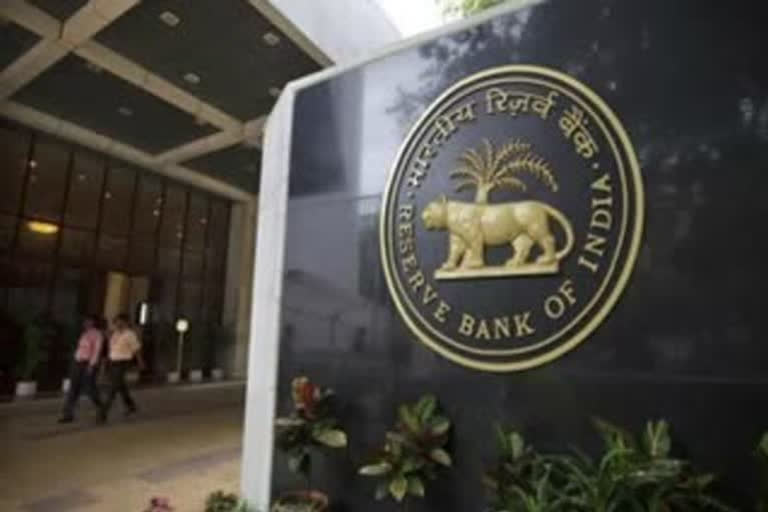Mumbai:The Reserve Bank on Wednesday expressed doubts about the government's ability to contain fiscal deficit at the budgeted 6.8 per cent this fiscal year after it moved the second supplementary demand of grants worth Rs 3.73 lakh crore which came in spite of a massive 83 per cent jump in net tax revenue so far this year to Rs 10.53 lakh crore.
The government has budgeted for total expenditure of Rs 34.83 lakh crore or 6.8 per cent of GDP.
While the net tax revenue rose from Rs 5,75,697 crore in October 2020 to Rs 10,53,135 crore till October 2021, a growth of 82.93 per cent annualized, total expenditure rose only by 9.95 per cent, led by infra spending to Rs 18,26,725 crore from Rs 16,61,454 crore during the same period, the RBI said in the financial stability report.
While overall tax revenue front was boosted by a 55.79 per cent jump in gross tax collection to Rs 13,64,101 crore till October, up from Rs 8,75,591 crore in October 2020. Of the total, direct tax revenue soared 70.73 per cent to Rs 6,59,066 crore from Rs 3,86,025 crore and indirect tax revenue rose 45.01 per cent from Rs 4,45,673 crore to Rs 6,46,283 crore.
Till October, all the deficit indicators of the centre (gross fiscal deficit, primary deficit and revenue deficit) showed improvement on-year as well as from their pre-pandemic levels. Gross tax revenues have been buoyant, with robust growth under all major heads, with direct taxes in the lead.
Total expenditure grew 9.9 per cent, the noteworthy feature being expansion of capital outlay by 28.3 per cent, led by roads and highways, notes the report.
But with the second supplementary demand of grants worth Rs 3.73 lakh crore, presented in December, the budgeted fiscal deficit of 6.8 per cent of GDP may come under strain, warns the report.
Also Read:Inflation, Omicron major risks to Indian economy: RBI
While fiscal deficit stood at 42.61 of the budgeted target, at Rs 5,47,026 crore down Rs 9,53,154 crore in October 2020, revenue deficit was 59.40 per cent at 3,13,478 crore in October 2021 from Rs 7,72,196 crore on-year and the primary deficit was only 76.23 per cent at Rs 1,47,289 crore from Rs 6,19,698 crore during the same period.
Though the size of gross government borrowing has proceeded at a pace that suggests that budget estimates will be adhered to, the report notes that repayment obligations of the government indicate a significant uptrend going forward, implying that gross borrowing is likely to remain elevated notwithstanding fiscal consolidation.
Earlier this month, the government sought parliamentary nod for Rs 3.73 lakh crore of additional spending, including Rs 62,000 crore infusion into the company that holds residual assets and liabilities of Air India after its privatisation as part of extra spending and an additional Rs 2,628 crore would be given towards loans and advances to Air India for recoupment of advance from the Contingency Fund.
The second batch of supplementary demands for grants, the net cash outgo would be over Rs 2.99 lakh crore and Rs 74,517 crore extra expenditure would be matched by savings by different ministries.
The amount includes extra spending of Rs 58,430 crore towards fertiliser subsidies, over Rs 2,000 crore towards various schemes of the department of commerce and over Rs 53,000 crore by the department of expenditure under various export promotion schemes, Rs 53,123 crore towards payment of pending export incentives and Rs 22,039 crore to rural development ministry for transfer to national rural employment guarantee fund.
During the first half, banks increased their G-Secs and state development loans purchases sharply, with their incremental holding accounting for 39 per cent and 68 per cent of the net issuance of G-Secs and SDLs, respectively. The dated G-Sec holding of the Reserve Bank also went up during the period, accounting for 27 per cent of the net issuance, the report says.
The quarterly weighted average cost of incremental government borrowing has inched up in line with market benchmark yield movements. Yields in the tenor bucket of 5-15 years have eased in December vis-vis at the beginning of the financial year.
The Centre borrowed Rs 13,70,324 crore in FY21, massively up from Rs 7,10,000 lakh crore in FY20, it has budgeted for a borrowing of Rs 12,05,500 crore in FY22 but has decided to borrow an additional Rs 3.73 lakh crore now. Of the budgeted it has till November 26, borrowed Rs 8,70,357 crore.
The states had borrowed Rs 6,34,521 crore in FY20 which went up to Rs 7,98,816 crore in FY21 and have so far borrowed Rs 4,06,246 crore till November 26.
PTI
